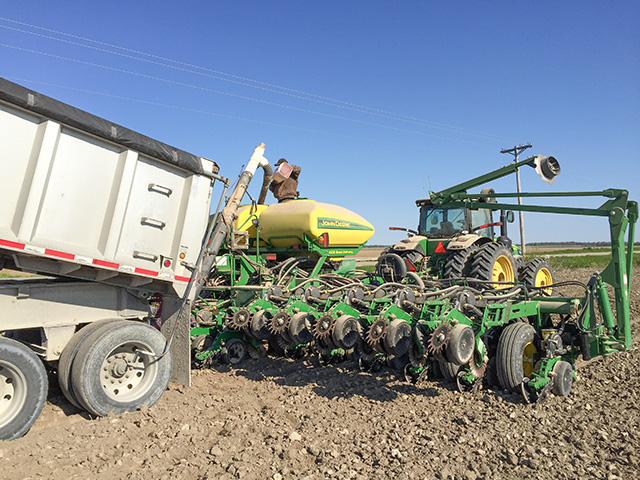Wilde's Favorite Story of 2021
Continuous Soy Acres May Increase Due to High Corn Input Costs
Editor's Note: 2021 was a wild one, from a tumultuous change in the White House, to continued La Nina influences on the weather, to skyrocketing fertilizer and input costs. There were also a lot of good stories to tell. As the calendar year comes to a close, we asked the DTN/Progressive Farmer writing team to pick their favorite effort from the year. The stories range from fun insights into ag entrepreneurs to serious investigations into the unintended consequences of popular production methods, to life lessons learned along the way to telling the tale. Each story also includes a link to the original story, in case you missed that. Enjoy a look back, with our ninth story, shared by Matthew Wilde.
**
ANKENY, Iowa (DTN) -- Skyrocketing fertilizer prices may reignite interest in a 2021 DTN story about continuous soybean production.
The cost of corn nutrients such as anhydrous ammonia, urea, UAN28 and UAN32 are at all-time highs and have more than doubled in the past year. High input costs, combined with fertilizer availability concerns, may prompt farmers to plant less corn and more soybeans in the spring. For this reason, "5 Tips if You Want to Grow Soybeans After Soybeans This Year" is my favorite story I wrote this year.
DTN writers were tasked with highlighting their favorite story in 2021. It could be an award-winning article or one that was fun to write and gets a writer's creative juices flowing. Or a story that readers have great interest in because it contains information that can help them be more productive and profitable. The last guideline influenced my decision.
An ag journalist's true mission is to provide unbiased information to farmers and industry leaders to help them make decisions to succeed. This story, I believe, does that.
P[L1] D[0x0] M[300x250] OOP[F] ADUNIT[] T[]
The article provides tips on growing continuous soybeans. It was my most-read story in 2021 and garnered several thousand page views on our website, www.dtnpf.com, which tells me there's a lot of interest. But even more important, the information in the story can benefit producers in 2022 as they make planting and in-season management decisions if they choose to grow soybeans after soybeans.
The practice isn't nearly as common as growing continuous corn. However, many farmers grow continuous soybeans for a variety of reasons and do it well. Interest by producers appears to be growing because of economics, such as the going price of commodities and profit potential when inputs are factored in, and other reasons. If there's going to be a year when farmers decide to give continuous soybean a try, 2022 may be it.
However, growing soybeans year after year in the same field can be risky. Disease and insect concerns and yield drag are among the chief worries.
"Some farmers see continuous soybeans as a viable option when prices are high," said Clarke McGrath, an agronomist and on-farm research and Extension coordinator for the Iowa Soybean Research Center at Iowa State University, in the article. "Farmers can reduce the risk, but not eliminate it, with good management. It can set them up for success."
In the article, brothers Cole and Zach Bailey shared their experiences raising continuous soybeans. The Baileys farm with their parents near Xenia, Illinois. The bulk of their 12,000 acres is usually soybeans every year and yields typically exceed the county average.
"If you stay on top of management, you can grow a heck of a soybean crop year after year," said Zack Bailey.
Agronomy specialists and farmers provided continuous soybean tips. Most, if not all, are helpful year after year.
Picking well-drained fields with history of low soybean cyst nematode pressure is high on the list. So is paying close attention to diseases such as Pythium that could be more prevalent when the disease cycle isn't broken by another crop. Advice about fertility, weed control and market considerations are also in the story.
U.S. farmers planted 87.6 million acres of soybeans in 2021, up 5% from the previous year, according to USDA's June Acreage report. 2022 soybean acres could be even higher.
Find the story originally published on Feb. 8 at www.dtnpf.com/agriculture/web/ag/crops/article/2021/02/08/5-tips-want-grow-soybeans-soybeans-2.
Matthew Wilde can be reached at matt.wilde@dtn.com
Follow him on Twitter @progressivwilde
(c) Copyright 2021 DTN, LLC. All rights reserved.






